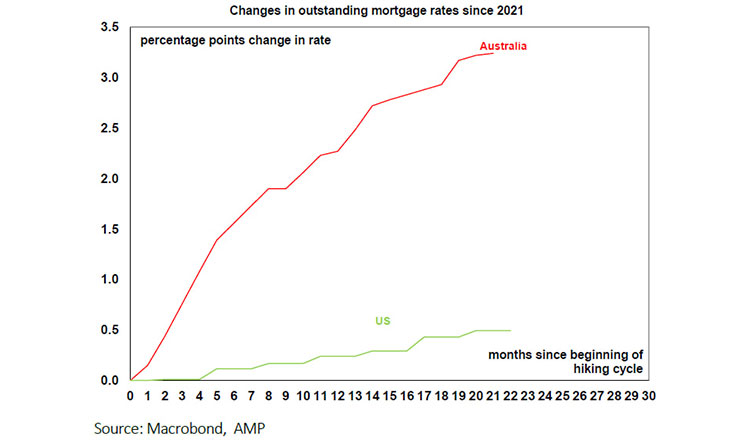Cracks in Australia’s economy starting to appear

The cracks are starting to appear. At least here.
While America’s economy continues to defy the odds, with stronger-than-anticipated inflation, employment and spending, Australia’s economy is labouring under the growing weight of the past two years of rate hikes.
Even though the Fed has hiked rates more than the Reserve Bank, the effect on mortgage interest rates here has been dramatically higher.
That’s now raising the prospect that we may end up cutting rates before the United States, an outcome that would place the Aussie dollar under even more pressure.
It is bang on 64 US cents this morning, and threatening to break even lower.
The latest piece of the domestic economic jigsaw puzzle shows a stark rise in business failures, which have risen to record highs, hit by a triple blow of weak consumer demand, cost pressures and a tax office now determined to collect what it’s owed.
According to data from debt monitoring firm CreditorWatch, more Australian businesses are now in the hands of external administrators than ever before, rising more than 22 per cent since this time last year. The pain is coming from all sides.
Construction firms are reeling from a crackdown by the Australian Tax Office, registering the most tax defaults, while also still facing rising building material costs and skilled labour shortages.
CreditorWatch finds smaller sub-contractor businesses in the residential sector are most at risk in the construction industry.
However, overall it is businesses in the food and beverage industries that are the most at risk of failure.
CreditorWatch chief executive Patrick Coghlan says businesses under pressure from higher costs are being starved of revenue from consumers battling with cost-of-living pressures.
“Most businesses, particularly those that are consumer-facing, and therefore exposed to the vagaries of discretionary spending, are being hit by a range of heavy impacts,” he said.
“We don’t expect business conditions to improve markedly until consumer spending increases, and that is dependent on interest rate relief, which is not even on the horizon at this point given the high rates of inflation in the US.”
According to the data, the difficulties in isolated industries are beginning to have a knock-on effect to suppliers.
Business-to-business payment defaults are surging, up more than 22 per cent since the same period a year ago, although the rate of growth appears to have tapered.
Even the mining industry has begun to show the strain, with rising insolvencies and late payments as commodity prices have dropped sharply this year.
The relative safe havens for business owners are to be found in healthcare and social assistance, benefiting from a government-funded NDIS boom, agriculture and fisheries, and the finance and insurance sector.
The worst-hit areas — those with the highest risk of business failure — are centred around Western Sydney and South-East Queensland.
According to the analysis, regions with a higher proportion of older businesses and older residents have shown greater resilience to the pressures as older businesses are less likely to be carrying higher debts, while older residents tend to have lower mortgage levels and their spending is more immune to interest rate movements.




